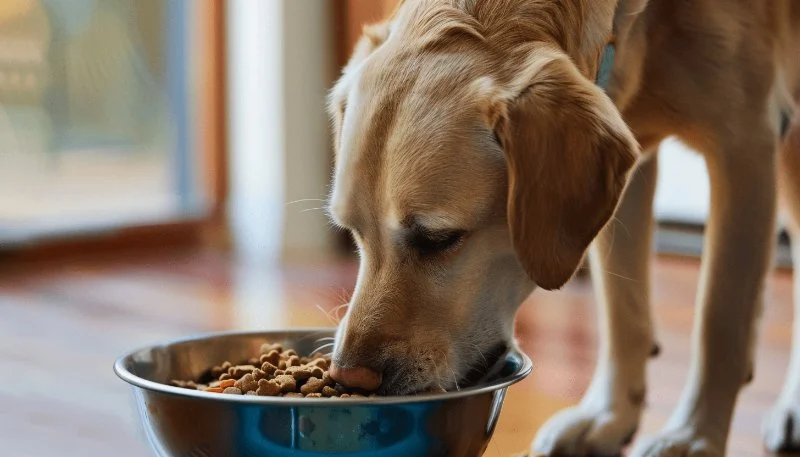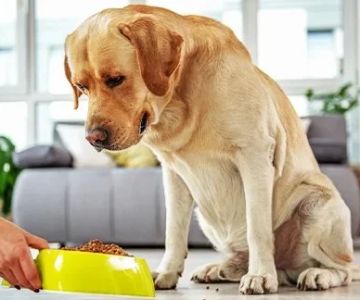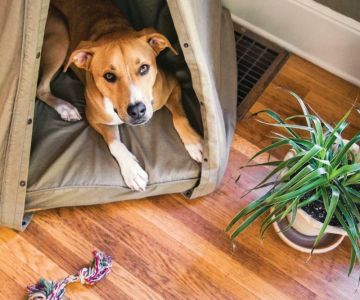
Dangerous Foods for Pets: What to Avoid Feeding
- 1 - Why Certain Foods Are Dangerous for Pets
- 2 - Common Foods That Are Harmful to Pets
- 3 - Signs of Food Poisoning in Pets
- 4 - What to Do If Your Pet Eats Something Toxic
- 5 - Real-Life Case: A Pet's Encounter with Dangerous Food
1. Why Certain Foods Are Dangerous for Pets
Pets, especially dogs and cats, have different digestive systems than humans, which means some foods that are perfectly safe for us can be toxic to them. Animals are often drawn to foods by smell or taste, but these can pose serious health risks. Some foods can lead to food poisoning, while others can cause long-term health issues such as organ failure or neurological damage.
Understanding why certain foods are dangerous and what risks they pose is crucial for keeping your pet safe. In this article, we'll break down the most common harmful foods, explain why they're dangerous, and provide actionable tips on how to protect your pet from accidental poisoning.
2. Common Foods That Are Harmful to Pets
Here are some foods that should never be fed to your pets, as they can lead to serious health issues:

Rio Verde Animal Hospital
ScottsdaleMaricopa CountyArizona
10989 E Dynamite Blvd # 103, Scottsdale, AZ 85262, USA
2.1 Chocolate
Chocolate is one of the most well-known toxic foods for dogs. It contains theobromine, which can cause vomiting, diarrhea, rapid heart rate, and seizures. The darker the chocolate, the more dangerous it is, as it contains higher levels of theobromine.
2.2 Grapes and Raisins
Grapes and raisins can cause kidney failure in dogs. Even a small amount can lead to symptoms such as vomiting, lethargy, and loss of appetite. The exact substance in grapes and raisins that causes toxicity is unknown, but it can be fatal if not treated promptly.
2.3 Onions and Garlic
Both onions and garlic contain compounds that can damage red blood cells in dogs and cats, leading to anemia. Even small amounts can be harmful, and repeated exposure can cause long-term health problems.
2.4 Avocados
Avocados contain persin, a substance that can cause vomiting and diarrhea in pets. While humans can safely consume avocados, they are dangerous for pets, especially in large quantities. The seeds and skin are particularly toxic.
2.5 Alcohol
Alcohol can have severe effects on pets, even in small amounts. It can cause symptoms like vomiting, diarrhea, difficulty breathing, and even coma. Pets that consume alcohol can suffer from severe intoxication and organ damage.
2.6 Xylitol
Xylitol, a sugar substitute found in sugar-free gum, candy, and some baked goods, can cause a rapid drop in blood sugar levels in pets, leading to seizures, liver failure, and even death. It's highly toxic to dogs and should be kept out of reach.
3. Signs of Food Poisoning in Pets
If your pet ingests something harmful, it’s important to recognize the symptoms of food poisoning or toxicity. Some common signs include:
3.1 Vomiting and Diarrhea
Vomiting and diarrhea are the most common signs of food poisoning. If your pet is vomiting or has diarrhea after eating something they shouldn’t, it’s a clear indication that something is wrong.
3.2 Lethargy or Weakness
Food poisoning can cause your pet to feel weak, lethargic, or uninterested in activities they normally enjoy. This can be a sign of toxicity affecting their body.
3.3 Excessive Drooling
If your pet is drooling excessively, it could be a response to nausea or discomfort caused by toxic food. This is particularly common in cases of chocolate or onion poisoning.
3.4 Abdominal Pain
Pets with food poisoning may show signs of abdominal discomfort, such as whining, refusing to eat, or even trying to avoid touch around their belly. They may also exhibit a hunched posture.
3.5 Difficulty Breathing
Severe reactions to toxic foods, such as alcohol or xylitol, can cause respiratory distress. If your pet is having trouble breathing, seek emergency veterinary care immediately.
4. What to Do If Your Pet Eats Something Toxic
If you suspect your pet has consumed something toxic, here’s what you should do:
4.1 Call a Veterinarian or Animal Poison Control
Immediately call your veterinarian or an animal poison control hotline (such as the ASPCA Animal Poison Control Center). They can help assess the situation and guide you through the next steps based on the type of toxin your pet ingested.
4.2 Do Not Induce Vomiting Without Guidance
In some cases, inducing vomiting may be necessary, but you should never attempt this without consulting a vet first. Certain toxins, such as sharp objects or caustic substances, can cause more harm if brought back up.
4.3 Monitor Your Pet
If your veterinarian recommends you wait for symptoms to develop before taking further action, keep a close eye on your pet. Watch for signs of distress or worsening symptoms, and be ready to take them to the vet if needed.
5. Real-Life Case: A Pet's Encounter with Dangerous Food
Meet Charlie, a 5-year-old Labrador who once ate a chocolate bar left on the kitchen counter. His owner, Jessica, noticed that he was vomiting and became lethargic shortly after snacking. Jessica quickly called her vet, who confirmed that the chocolate had caused Charlie’s symptoms due to the theobromine content. Fortunately, with prompt treatment and supportive care, Charlie recovered completely.
This case highlights the importance of keeping dangerous foods out of reach and being vigilant about signs of poisoning. Prompt action can make a huge difference in the outcome of such situations.








 Princeton Veterinary Hospital4.0 (821 reviews)
Princeton Veterinary Hospital4.0 (821 reviews) Thomas Ridge Kennels4.0 (17 reviews)
Thomas Ridge Kennels4.0 (17 reviews) All Creatures Animal Hospital4.0 (354 reviews)
All Creatures Animal Hospital4.0 (354 reviews) Fatty Paws Pet Boutique0.0 (0 reviews)
Fatty Paws Pet Boutique0.0 (0 reviews) CityVet | Lone Mountain Veterinary & Urgent Care4.0 (104 reviews)
CityVet | Lone Mountain Veterinary & Urgent Care4.0 (104 reviews) Petnificent Picks5.0 (1 reviews)
Petnificent Picks5.0 (1 reviews) How to Transition a Senior Pet to Easier-to-Eat Food: A Comprehensive Guide
How to Transition a Senior Pet to Easier-to-Eat Food: A Comprehensive Guide The Hidden Dangers in Common Pet Supplies: What You Need to Know
The Hidden Dangers in Common Pet Supplies: What You Need to Know Managing Chronic Conditions in Pets: Essential Diet, Medication & Lifestyle Tips
Managing Chronic Conditions in Pets: Essential Diet, Medication & Lifestyle Tips How to Build a Pet Emergency Kit: Essentials You Need
How to Build a Pet Emergency Kit: Essentials You Need Best Practices for Pet Grooming Frequency by Breed: Keeping Your Pet’s Coat Healthy
Best Practices for Pet Grooming Frequency by Breed: Keeping Your Pet’s Coat Healthy The Effect of Seasonal Allergies on Pets & How to Help
The Effect of Seasonal Allergies on Pets & How to Help